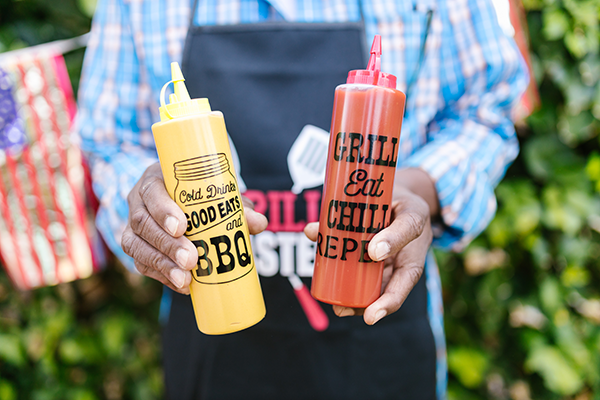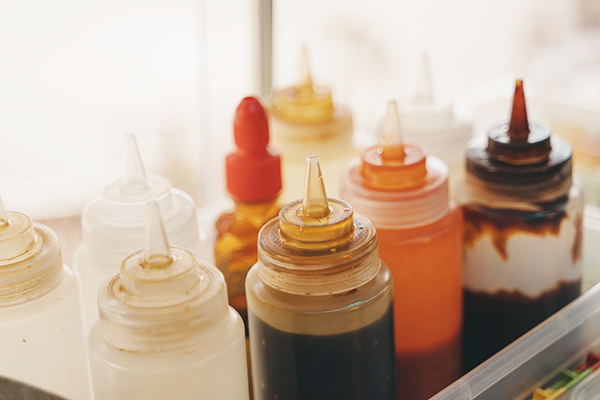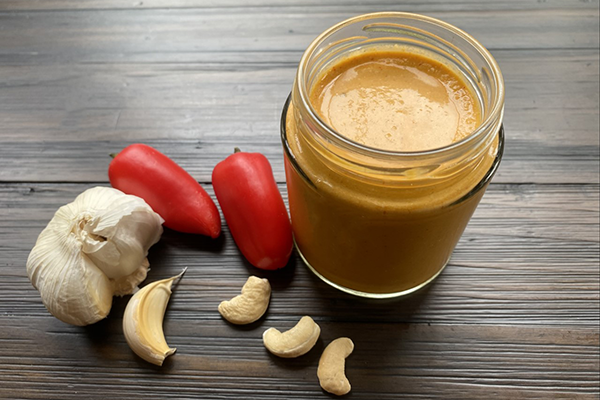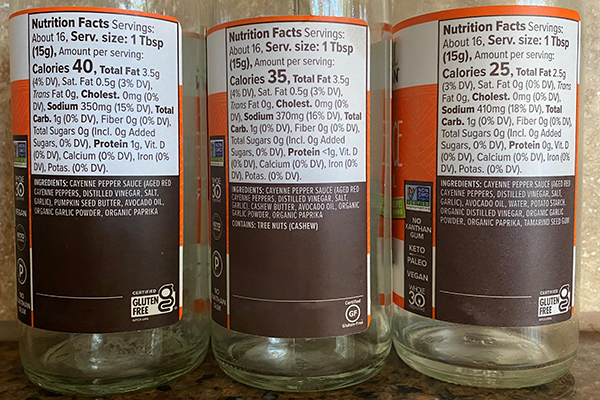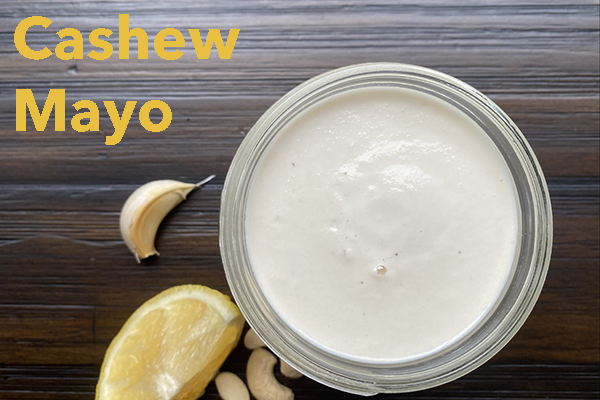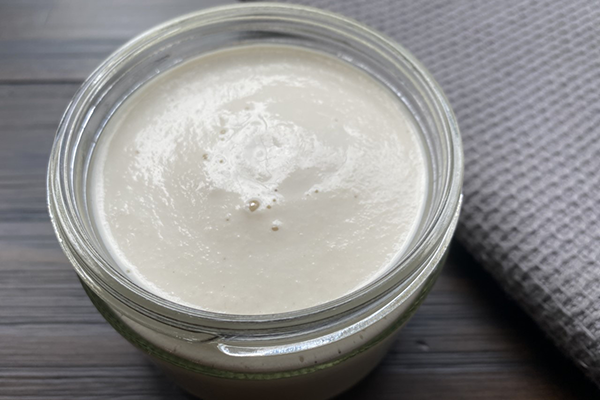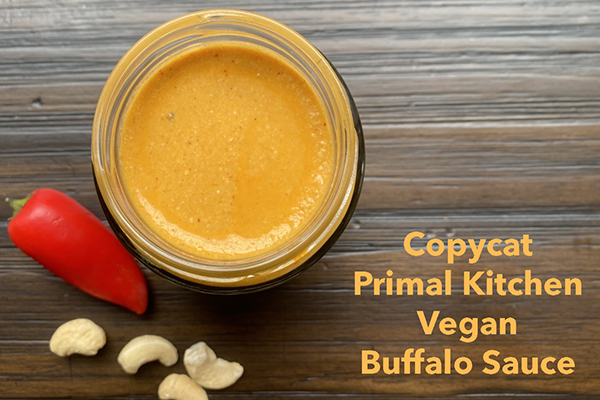Sauces, spreads and seasonings are a great way to add some zip to a meal, and it can be convenient to buy them instead of making them from scratch. Unfortunately, a lot of store-bought condiments and dressings (even many targeting health-conscious consumers) are filled will additives. From added sugars, MSG and modified food starch to alter taste and texture, to artificial colorings and chemical preservatives, the ingredients lists of condiments can be overwhelming and a little scary. Clever marketing makes it hard to know which multi-ingredient condiments are healthy enough and which could be derailing your efforts.
The longer the ingredients list and the more it sounds like a science experiment and not a recipe, the more you might want to limit the amount you consume, especially if you have unexplained symptoms that you are hoping to resolve through a cleaner eating pattern. The health effects of some ingredients are well understood (such as the blood sugar, insulin and energy disrupting impact of excess sugar and starch). The effects of other additives, however, range from safe to unclear to potentially harmful. For ethical (and sometimes political) reasons, researching consumption and toxicity of food additives in humans has its limitations, so data in this area is incomplete. Interestingly, several additives banned in Europe are still widely used in the U.S. Your best bet is when in doubt, leave it out.
Keep it Simple
Thankfully, there are some simple and nutritious store-bought flavor boosters that can be used as toppings, spreads, dressings or marinades. Guacamole, olives, fermented sauerkraut, kimchi, cottage cheese, hummus, vinegars, dried herbs and spices, fresh pico de gallo and salsa all have health benefits. There are several widely available brands that don’t feature unwanted additives. Bragg’s amino acids, hot sauce, fish sauce, soy sauce or tamari, coconut aminos, curry paste and nutritional yeast can also be clean and convenient ways to add interest to a meal. Always double check to make sure the product you pick doesn’t contain ingredients you are trying to avoid.
Some Cleaner Brands
You might be surprised to find added sugar and other questionable ingredients in some tomato sauces, ketchups, mustards and mayos, but there are some products that are relatively straightforward and can be part of a whole foods-based eating pattern. For example, Chosen Foods and Primal Kitchen brands offer some varieties of mayo that you can feel good about. Sir Kensington’s avocado oil mayonnaise is another good choice, but the company’s other varieties contain added sugar. If you are looking for a ketchup without added sugar, Primal Kitchen makes one.
You’ll probably recognize all the ingredients in brands such as Bitchin’ Sauce and Tesssamae’s Dressings which is a good thing in general. Take note, however, that the soybean, sunflower, canola and other vegetable oils used in many store-bought condiments and dressings (even the organic ones) are generally not as health-promoting as a good quality extra virgin olive oil or avocado oil. If you have the time, it’s almost always best to make your own.
Make some simple swaps to clean up your condiments. #cleaneating #saslife Click To TweetMake Your Own
Making dressings and condiments can be surprisingly easy. Check out the recipes for cashew mayo, buffalo sauce, Greek yogurt ranch, hummus, enchilada sauce and ketchup.
Online Buyers Beware
Product formulas change from time-to-time. See the example below. I didn’t realize right away when the company changed their ingredients and added potato starch to a much loved buffalo sauce I used to buy. To add to the confusion, their website still had the original ingredients listed at the time this blog was published. When I spoke to a representative of the company, she explained that the website would not be updated until they sell out of the original version. I imagine it could take even longer for the websites of third party sellers to update their ingredients list, so if you want to avoid certain ingredients, do not rely on online shopping for condiments.
The Bottom Line
If you’re looking to clean up your condiments, use simple staples, make your own or double check the ingredients list in the store before purchasing. Even the imperfect store-bought condiments can be part of your life if you use them sparingly and you don’t have sensitivities to the ingredients. If you use certain condiments regularly in larger quantities or have certain goals related to your health, however, it’s worth choosing those with less (or no) added sugar and opting for those with high quality ingredients that you know you tolerate. Small changes add up.
Cashew Mayo
Makes 1 ½ - 2 cups
Recipe From: Kara Fitzgerald, ND
PRINT RECIPE
This is great to use as is or as a base for dressings, spreads and dips.
Ingredients
1 cup cashews or macadamia nuts
¾ - 1 cup water
½ tsp onion powder
¼ tsp garlic powder
¼ tsp salt
½ lemon, juiced
Directions
- Soak cashews in 1 cup water for at least 2 hours or overnight.
- Place cashews, with ½ - ¾ cup of their soaking liquid, and remaining ingredients in a food processor or blender and process on high for about 5 minutes. You may need to scrape the sides down intermittently.
- Add additional water (soaking liquid) until desired consistency is reached. It’s done when the mixture is completely smooth and no longer tastes grainy.
Notes
- If you want to use this as a dip or spread, use ¾ cup water.
- With a full cup of water, the consistency is great for dressings. You can also stir 1-2 Tbsp into soups or casseroles to give a creamy texture.
- You could also blend in a “meaty” vegetable such as cooked artichoke, broccoli or zucchini for a tasty dip. Or blend in herbs for a creamy herb dressing.
Copycat Primal Kitchen Vegan Buffalo Sauce
Makes 1 cup
Recipe Adapted From: The Happy Gluten Free Vegan
PRINT RECIPE
Ingredients
½ cup raw cashews
¼ cup Tabasco sauce (can also use Siracha or Cholula red sauce)
water
1 Tbsp avocado oil
¼ tsp garlic powder
¼ tsp paprika (if you like it a little smoky, use smoked paprika)
Directions
- Boil at least 1 cup water.
- Put the cashews in a heat-proof container and cover with boiling water.
- Let sit for 10 minutes, and then drain, retaining ¼ cup water.
- Add the Tabasco sauce, ¼ cup water, avocado oil, garlic powder and paprika to the cashews. Put on an apron and blend with a stick immersion blender until smooth. It helps to partially cover the bowl with a clean dishtowel as you blend. (The Tabasco covered cashews try to escape!)
Notes
- If you don’t have a stick blender you can use a regular blender or food processor, but you may need to double the recipe in order for your blender to be effective.
- This buffalo sauce is hotter than the Primal Kitchen version. Decrease Tabasco, or increase cashews and water to make a milder sauce.
